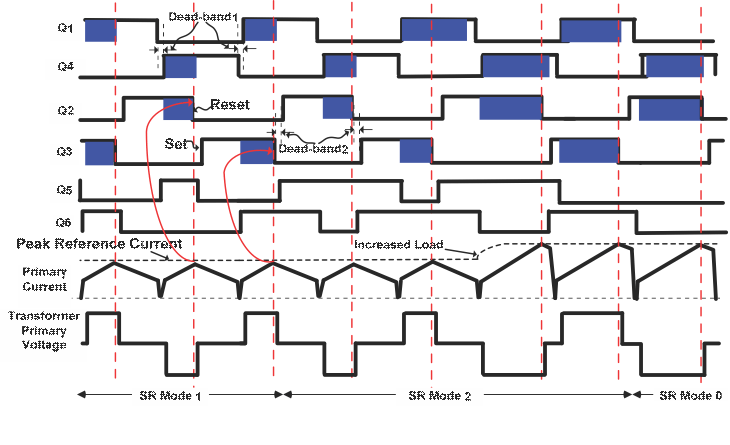SPRADG4A January 2024 – April 2024
- 1
- Abstract
- Trademarks
- 1General Texas Instruments High Voltage Evaluation (TI HV EVM) User Safety Guidelines
- 2Introduction
- 3System Description
- 4System Overview
- 5Hardware
-
6Software
- 6.1 Getting Started With Firmware
- 6.2 SysConfig Setup
- 6.3 Incremental Builds
- 7Testing and Results
- 8References
- 9Revision History
4.3.3 Synchronous Rectification
 Figure 4-5 Synchronous Rectification
Mode
Figure 4-5 Synchronous Rectification
ModeSynchronous rectifiers can work in one of the following three modes at any given time:
- Mode 0: This is the classical diode current doubler mode achieved by keeping synchronous rectifiers turned OFF. It is useful for very low load operations where synchronous rectifier switching losses are greater than the power savings obtained by synchronous rectification.
- Mode 1: In this mode the synchronous rectifier switches behave like ideal diodes. This mode is useful when operating at very low to low loads, typically when burst mode is being used. In this mode, synchronous rectifier MOSFETs are ON only when the corresponding diagonal bridge drive signals overlap.
- Mode 2: Useful for all other load conditions. In this mode, synchronous rectifier MOSFETs are OFF only when the corresponding opposite diagonal bridge drive signals overlap.
Figure 4-5 depict waveforms generated for driving the synchronous rectifier switches in these modes. It is important to implement mode transitions seamlessly without any glitches or anomalies on the PWM outputs even during large load transients or sudden phase shift change commands to provide safe operation of the system.